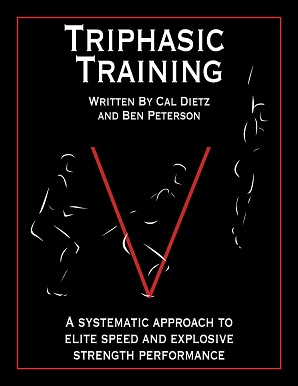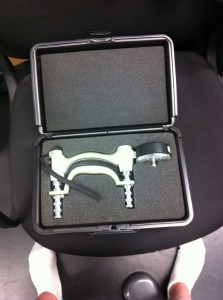There has been tons of great thought processes shared about the role of the foot in regards to function and sports performance. For example, I immediately think of people such as Todd Wright (Strength and Conditioning Coach at University of Texas Basketball) and Gary Gray when it comes to people who are passionate about it. I find it fascinating how important the foot is in regards to function and the chain of events that happens to the whole entire body once it hits the ground.
As a strength and conditioning coach who works with hockey players, I could make a case for ignoring the movements of the foot. Why? An aspect to consider in regards to hockey players is that the game is played on/in skates. The foot never hits the ground. Hockey skates are supportive and they lock the foot and ankle into place with the firmness of the boot and the tightened skate laces. There is not much movement available in the foot when it is in a skate. However, there has to be movement so the foot can feel the skate blade below it- especially when accelerating, stopping, starting, turning, and crossing over.
When hockey players are participating in strength and conditioning programs (I really don’t like the term “dry-land”), they are wearing athletic footwear. Their feet have to be able to move and produce ground force reactions. As for footwear, we are always suggesting that our players wear the barefoot/minimal concept shoes. This past season, we ordered a pair of New Balance Minumus for all of our players.
Something that I continue to see is that when some athletes are move, whether it be during warm up, or while strength training (especially single leg exercises), the foot that is on the ground may move. Sometimes, I may observe eversion of the ankle and foot. Most of the time, I see inversion where it looks like the athletes’ foot rolls to the outside. I commonly see this with the front foot of a forward lunge walk, during a 1-leg modified straight leg deadlift, and versions of some of our single leg squatting exercises. When this happens, it is obvious that the big toe isn’t pushing into the ground the way that it should be. I can actually see the part of the shoe that covers the big toe come off the floor.
Why is this important?
With the foot rolling to the outside during most single leg strength exercises, this may be occurring inside the skate when they are skating. It is imperative for a hockey player to be able to use the muscles of the big toe while skating. The final phase of the push off in skating is referred to as the “toe flick” which is accomplished by pushing the big toe into the ice and pushing off.
What can happen with players who’s big toe doesn’t hit the ground is that the toe flexor muscles can become weak/underactive. The specific muscle would be the Flexor Hallucis Longus. This muscle originates at the lower 2/3 of the back of the the fibula. The tendon goes under the foot and attaches to the base of the big toe. Its action is plantar flexion of the big toe.
I am not advocating the addition of seated calf raises to strengthen the Flexor Hallucis Longus into a hockey player’s strength and conditioning program. However, I am advocating for strength and conditioning coaches to be aware of their players and their ability to use their big toe muscles. Have them pay more attention and keep their foot flat on the ground while warming up and performing strength training exercises. They also need to think about pushing their foot into the ground/ice and finishing off the push off with the big toe flick when running or skating.
If a player is already playing at a high level with weak toe flexors, how better might they be if they were able to push that big toe into the ice harder to generate a better toe flick while skating? Sometimes every little bit of difference helps.







